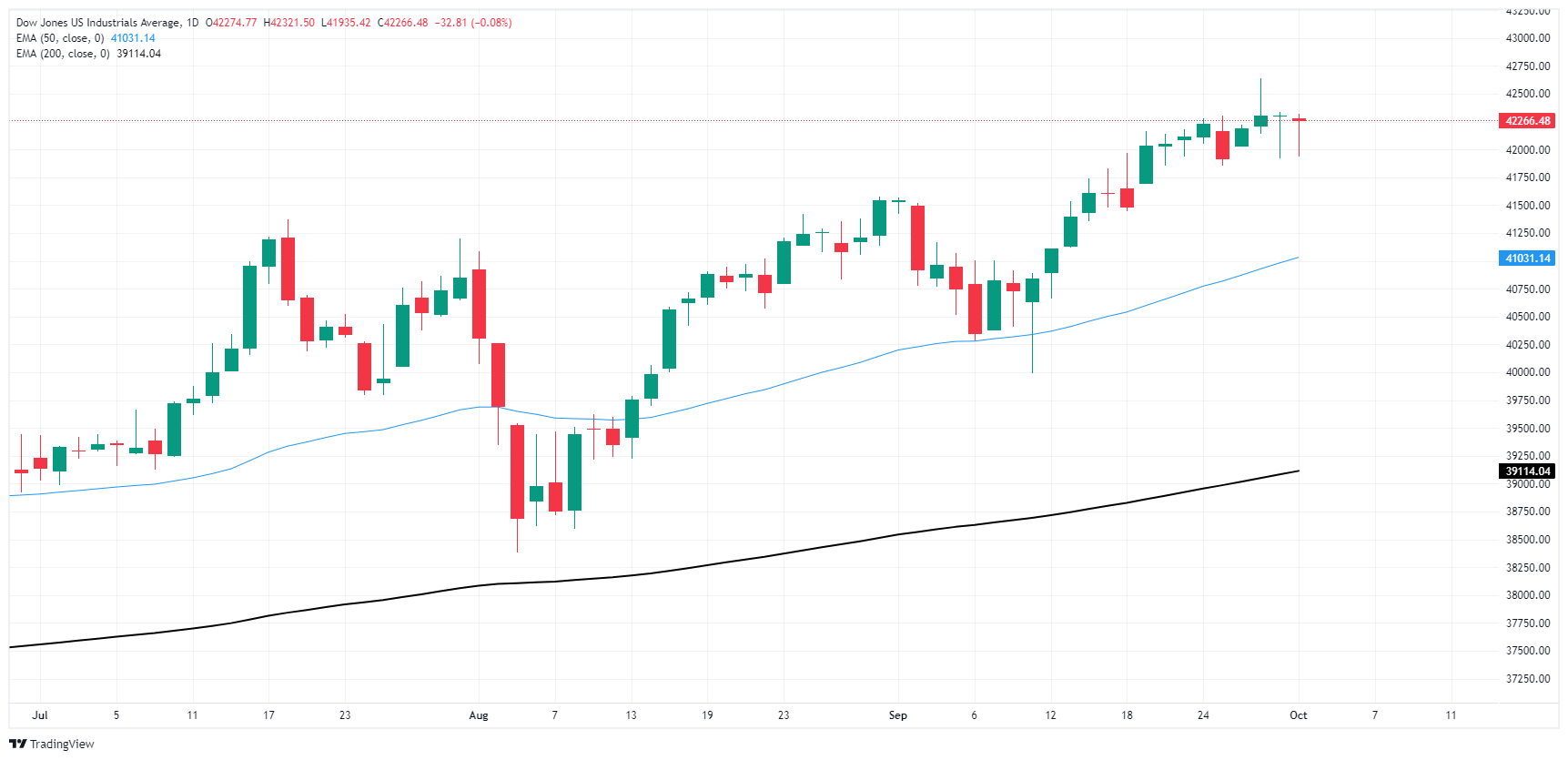Dow Jones roils as Middle East tensions rise

- The Dow Jones shed over 300 points on Tuesday, with geopolitical tensions on the rise.
- Equities are slowly bouncing back but remain mired in the low side.
- Meager US ISM data did little to provide support for investors.
The Dow Jones Industrial Average (DJIA) plunged early Tuesday, driven into the low end by a mix of disappointing US industrial figures and renewed threats of a spillover in the Israel-Hamas conflict. US ISM Manufacturing Purchasing Managers Index (PMI) figures failed to rebound in September, as many market participants had hoped for. Israel’s recent military strikes on alleged Hamas targets in Lebanon have sparked a threat of retaliation from Iran, significantly widening the scope of the Middle East conflict.
September’s US ISM Manufacturing PMI remained stubbornly entrenched at 47.2 for a second consecutive month, entirely missing the expected uptick to 47.5. ISM Manufacturing Prices Paid also backslid more than expected over the same period, falling into contractionary territory at 48.3, down from the previous 54.0.
Looking further into US data, JOLTS Job Openings in August rose to 8.04 million, over and above the previous period’s revised 7.7 million, but the widening expanse of listed job openings may not be translating directly into new hires after the ISM Manufacturing Employment Index for September fell to 43.9 from the previous 46.0, entirely missing the forecast upswing to 47.0.
Investor attention has swung around to focus fully on Middle East geopolitical tensions after early reports that Iran has executed a first missile barrage against Israel in response to Israel’s recent invasion of Lebanon. The US has declared it will retaliate on Israel’s behalf, and investors are balking at the prospect of a rapid escalation of the ongoing conflict.
Dow Jones news
Roughly two-thirds of the Dow Jones stock index is in the red on Tuesday, with limited gains for the winners. Chevron (CVX) has been on the rise recently, gaining ground after announcing last week that the company would not be shelling out the capital to make heavy investments in developing LNG refineries within the US. Investors rewarded the energy company for keeping its cash resources close to the chest, and Chevron is up a further 1.6% on Tuesday, rising toward $150 per share.
Going in the opposite direction, Intel (INTC) is back into the red, declining 4.7% on Tuesday and tumbling below $22.50 per share as shareholders, who were recently spurred on by hopes of a mega-merger between Intel and competing chipmaker Qualcomm (QCOM). However, the reality that regulators are unlikely to allow a single company to dominate the overwhelming majority of global silicon chip printing is weighing heavily on traders.
Dow Jones price forecast
Dow Jones’ flub sees the major equity index testing back into the 42,000 handle, and bidders are struggling to recover balance despite etching in fresh all-time highs late last week. Despite a bearish intraday shock on Tuesday, the DJIA remains well-bid overall, up over 5% from the last notable swing low in mid-September into the 40,000 handle.
Dow Jones daily chart
Economic Indicator
ISM Manufacturing Employment Index
The Institute for Supply Management (ISM) Manufacturing Index shows business conditions in the US manufacturing sector, taking into account expectations for future production, new orders, inventories, employment and deliveries. It is a significant indicator of the overall economic condition in US. The ISM Manufacturing Employment Index represents business sentiment regarding labor market conditions and is considered a strong Non-Farm Payrolls leading indicator. A high reading is seen as positive for the USD, while a low reading is seen as negative.
